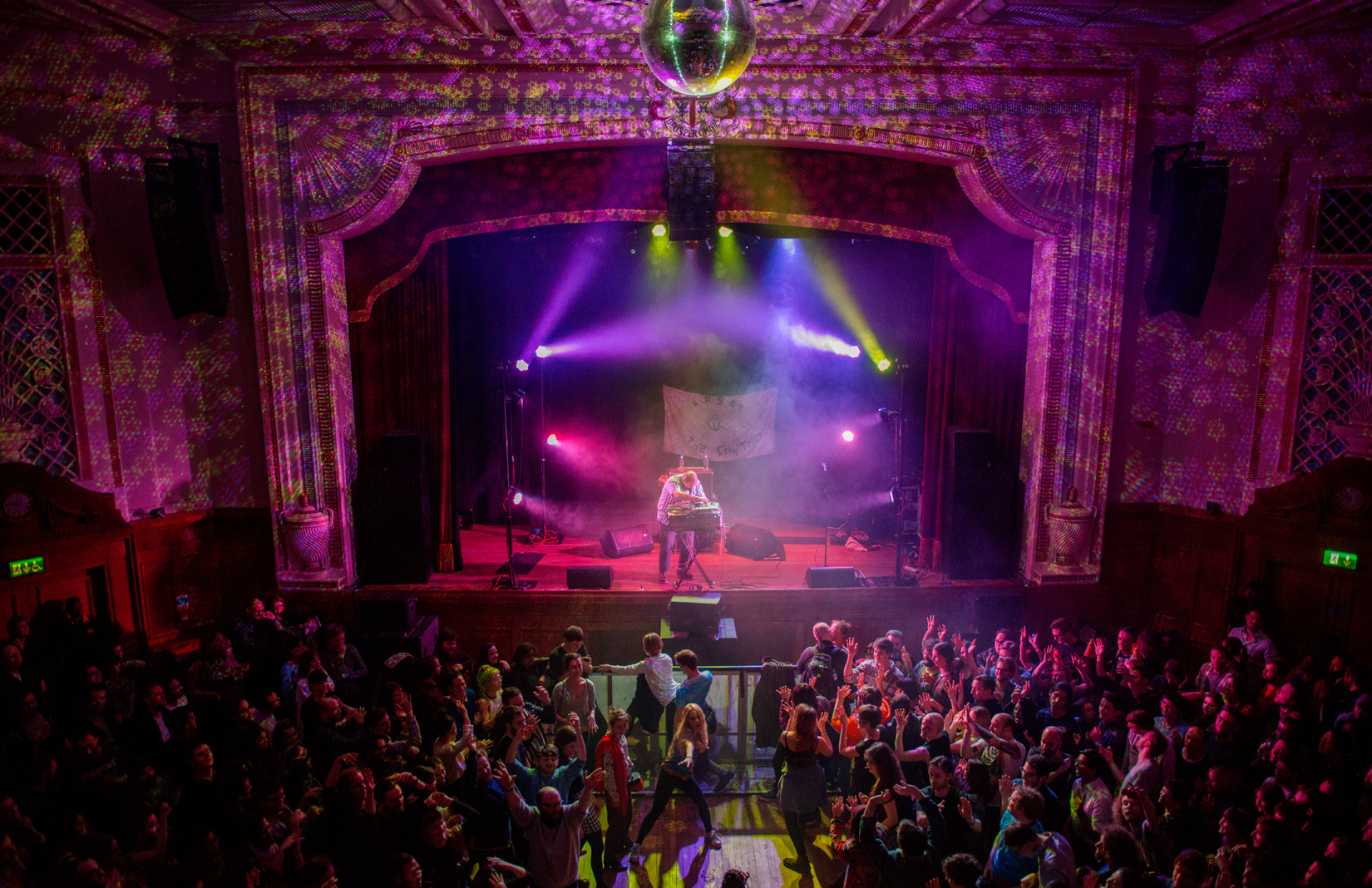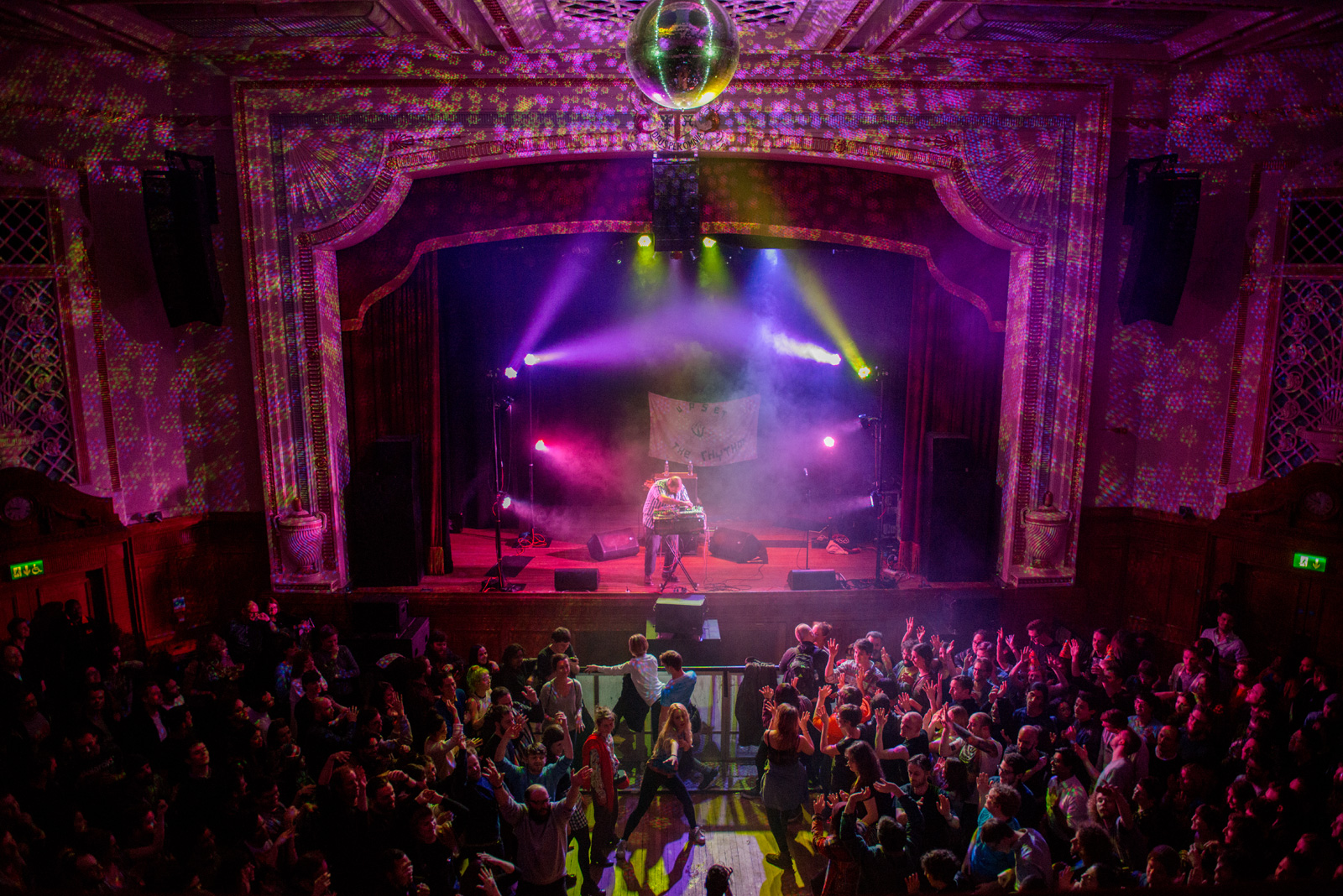
American musical adventurer, Dan Deacon, began his career playing experimental, electronic works in tiny re-purposed rooms. He has since gone on to work with bands and write for orchestras; performing his visceral, avant-garde compositions at the Barbican, Carnegie Hall and the American Museum of Natural History amidst a cornucopia of improvised spaces, gig venues, festivals and art galleries.
But Deacon refuses to take any space at face value, instead seeking to re-contextualise each performance using its physical structure, surroundings and audience participation to conjure collective cathartic experiences.
He is currently touring his latest in a series of exhilarating albums, the electronically composed Gliss Riffer, which beautifully reflects the frenetic yet enlivening feeling of our unstable present. We spoke to him to find out precisely how he uses his show spaces to enhance his performances.
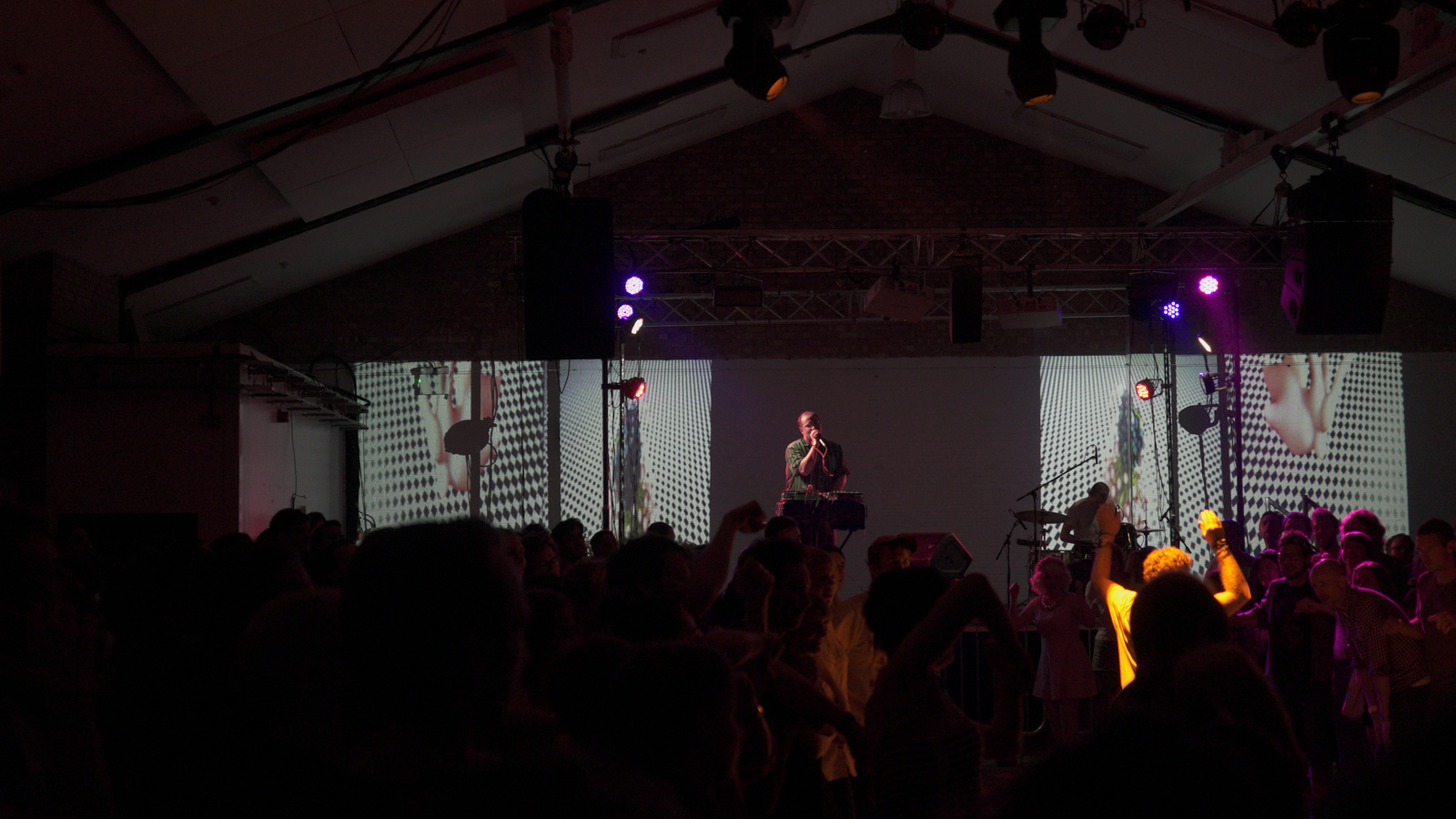
You first performed in spaces without an inherent ‘music venue’ identity. Did this influence the development of your shows?
That helped the idea grow, but what started me thinking about re-contextualising a room, about what space meant to a performance and how an audience interacts with it, was during my first packed-out show in New York. The power went out and I knew that if I stopped performing it would lose momentum, so I stalled by creating a circle in the middle of the floor for a dance contest.
Once it started, I noticed that everyone was now looking into the centre of the room rather than being fixated on the spot where the performer would have been. And when it ended, people kept dancing oriented in all directions, as if there was no performance.
I realised then that the audience is the performance, and also that the venue has no aspect that can’t be used as part of it too. So if there’s a balcony we take it onto the balcony. If there are multiple doors, then we go outside.
What do you look for when choosing a space to play?
Any space can create an appropriate level of performance. Universally people want to have fun. It’s just about finding a way to make it resonate. When you go into a ‘sterile’ space such as a museum or gallery and start breaking down what is normal and acceptable, saying, ‘Look you can do what you want!’, then it can either be difficult, or like pouring gasoline on a fire so it explodes.
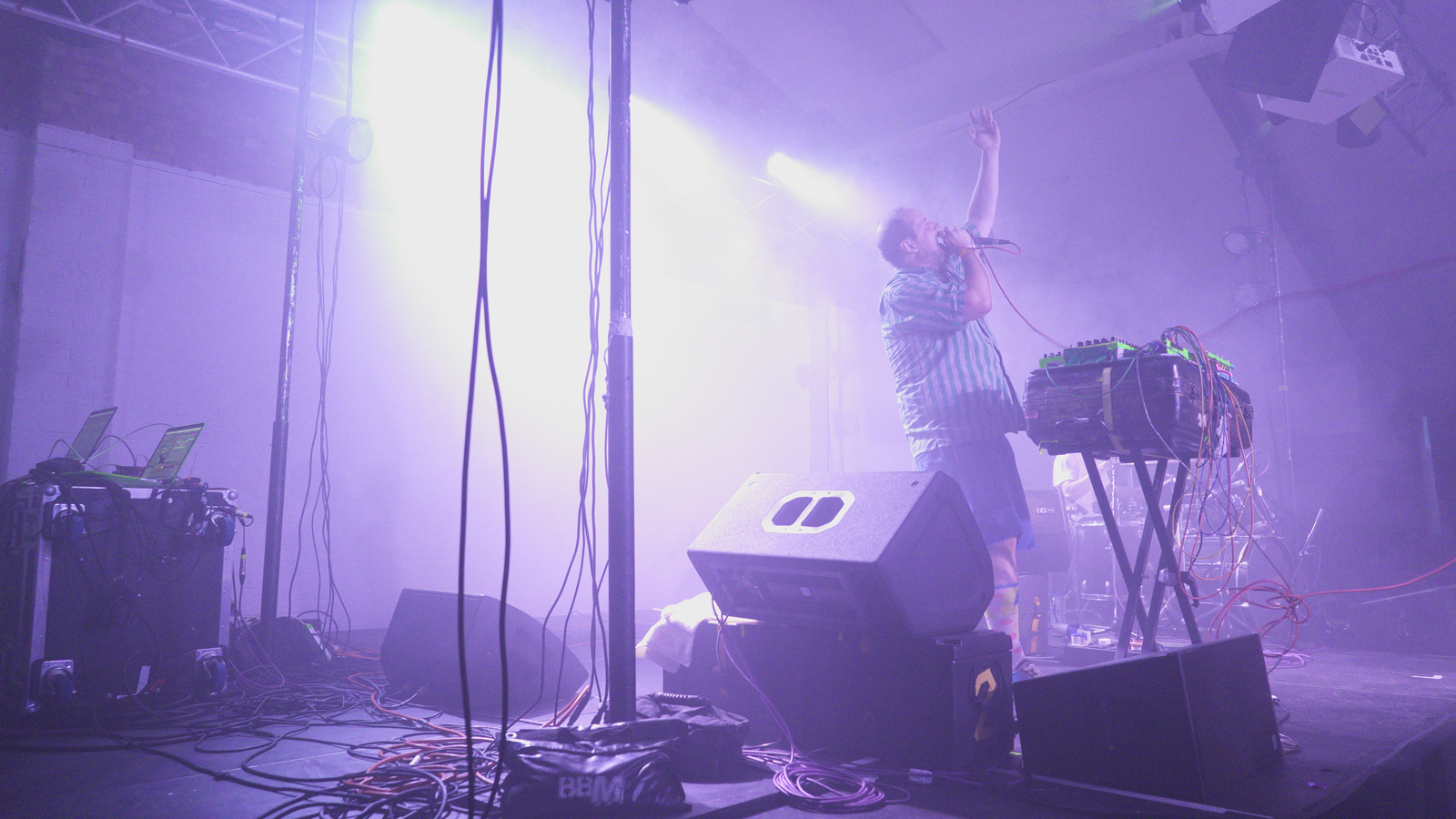
Do you adapt your sound or lighting set up to each venue?
We tour with the ability to be self-contained so we could play a raw space, but obviously somewhere with facilities is also nice. We look around each new place and figure out which stage set to do before I then think about what audience participation ideas can work there.
So, you work by reacting to the space each time?
Exactly. And also by seeing how willing the staff are are to make the show insane.
I read that you said that you like to ‘mess with microstructure and macrostructure of a performance’. What do you mean by these terms?
The macrostructure is like the script of a play, it’s a narrative that won’t change hugely, but it’s nice to have collaborators improvise from it – whether that’s the audience or the room itself. The microstructure is then formed by the actions of each individual in the room during the show.
Which locations have been remarkable to perform in so far?
Playing the Whitney was crazy because I had expected the show to turn out mellow in that space. I visited it a lot when I was in college, so it felt good for that reason too.
Lollapalooza in Chicago was also special. We were doing a ‘follow the leader’ dance with this crowd of about 20,000 when one person threw a bottle of water in the air and suddenly everyone did. It was chaos, but it was beautiful – although it shows how much waste occurs at a festival.
And the Barbican was a wild space too.
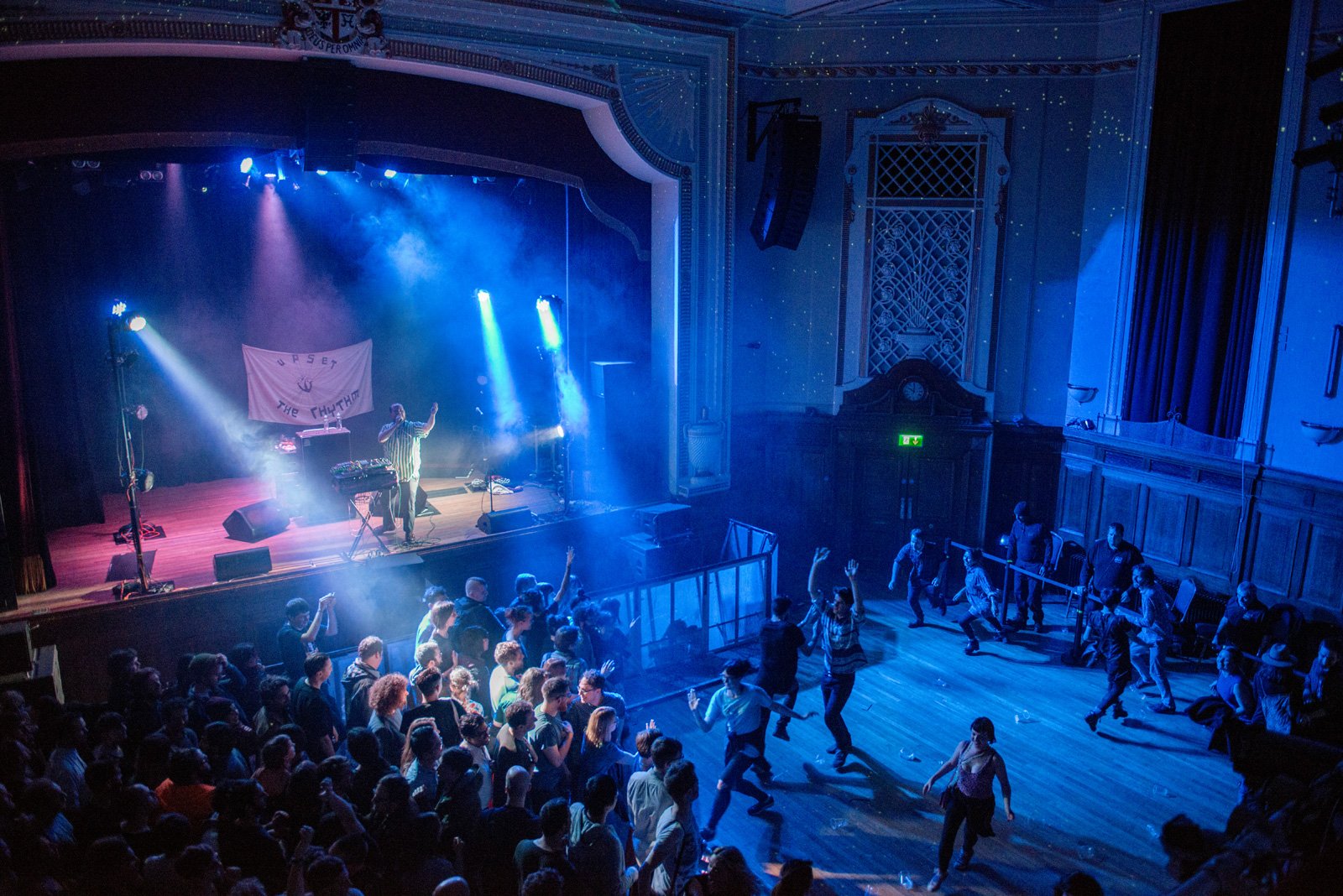
You occasionally create shapes, architecture if you will, out of the audience by making a human bridge, for example. Do you ever find inspiration for these from structures in the cities that you play in?
They mostly come spontaneously and are influenced by a million different spots. The main thing that I try to think about is what can you do with a room full of people who each identify as individuals, not a homogenous crowd, to create an experience where they go from being ‘I’ to ‘we’. And how you make that happen with minimal break in the music.
So, when you played Occupy in New York to an audience already identifying as ‘we’, that must have been a huge highpoint?
Oh, 100% When they asked me to perform it was like, ‘Yes!!! Thank you so much!’

Lastly, do you have any dream spaces that you would like to play?
There’s a squat I’d love to play in Ljubljana, Slovenia – that would be a really fun. The Guggenheim seems perfect for a crowd-based performance. And there are lots of beautiful spots in America’s State and National Parks that would create wonderful shows too.
The next stop on Dan Deacon’s tour is Islington Mill in Manchester on 18 June. Gliss Riffer is out now via Domino Records




